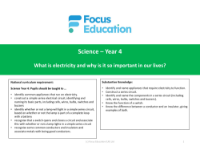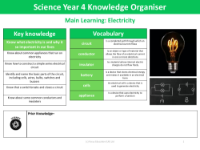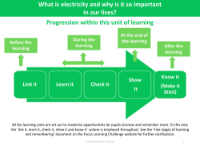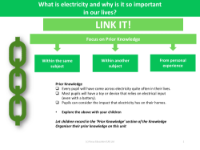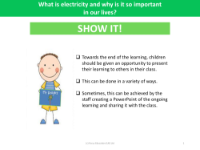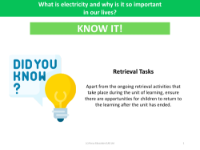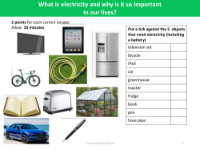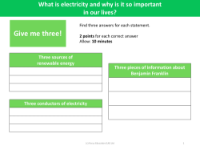Insulator or conductor?

Electricity is a fundamental form of energy observable in positive and negative forms that occurs naturally (as in lightning) or is produced (as in a generator) and that is expressed in terms of the movement and interaction of electrons. It is immensely important in our daily lives as it powers most of our modern conveniences, from lighting and heating to powering appliances and electronic devices that we depend on for communication, work, and entertainment. The ability to harness and distribute electricity has transformed the way we live, work and play, making it one of the most significant scientific advancements in human history.
In an educational activity designed to distinguish between electrical insulators and conductors, students are tasked with identifying whether certain materials are insulators (i) or conductors (c) of electricity. The list includes a variety of materials such as silver, rubber, steel, dry wood, gold, sea water, oil, copper, diamond, and glass. The activity is structured to encourage students to apply their knowledge of the properties of materials, with conductors being those that permit the flow of electric current, and insulators being materials that resist this flow. Students are given 10 minutes to complete the task, with each correct answer awarded two points, reinforcing the learning objective in a time-managed environment.
